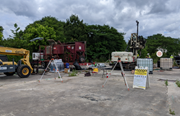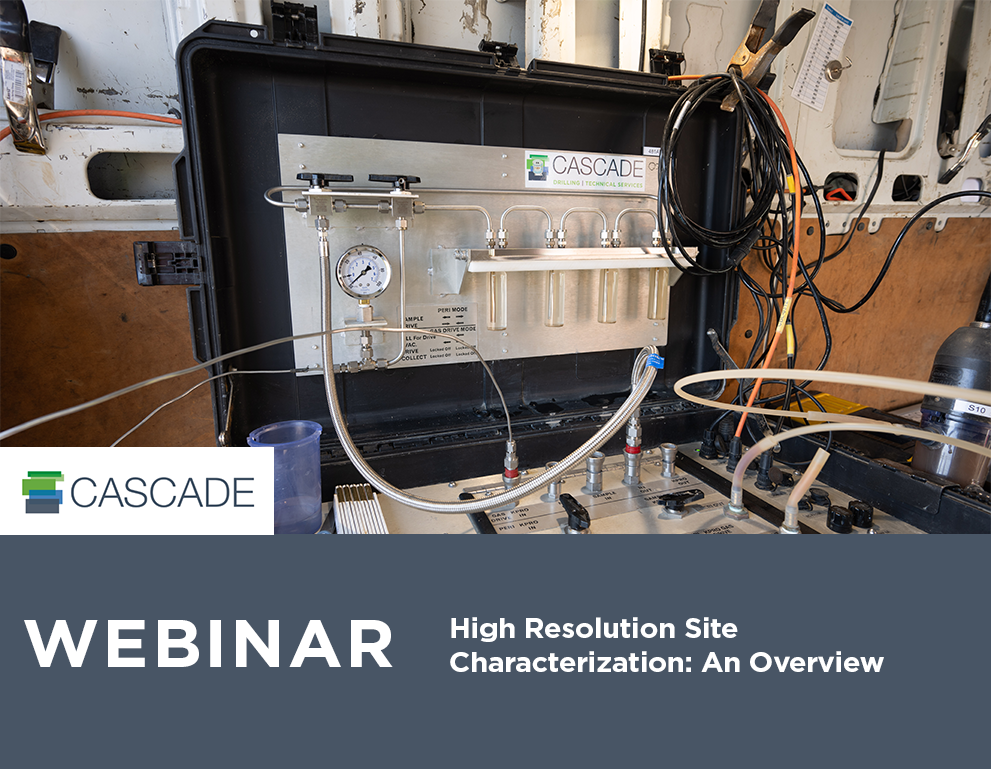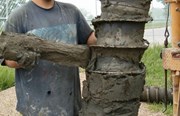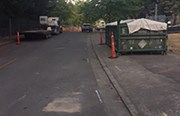Increasing Efficacy and Cost Savings: Why Pilot and Design Optimization Testing Are Important
By: Eliot CooperPilot tests and design optimization tests (DOT) are intended to optimize remediation project design and reduce costs, but often they’re treated as an unnecessary delay and cost before real work begins. Many consultants question the utility of these smaller scale remediations, but they’re an important step in evaluating if the full-scale design will meet clean-up expectations at the cost estimated. In this blog post, I’ll explain how these tests improve the design, implementation, and results of injection remedies.
On a related note, I've presented deep dive into how injection of emulsified zero valent iron (EZVI) can be used to treat chlorinated solvents. Watch my webinar-on-demand, Struggling with CVOC Source Zone Treatment? Learn How NASA Figured It Out, if you're interested in learning more.
WHY CONSIDER PILOT TESTING?
There are many reasons to consider pilot testing, and they almost always outweigh the inconvenience of performing them. Some of those reasons include:
- Learning if your bench scale or stoichiometric designs (with safety factors) can be scaled up effectively
- Determining if it’s possible to achieve the overall remediation goals, given the soil and groundwater monitoring concentrations
- Evaluating different remedial chemistries and/or delivery approaches, and how they are dosed and sequenced when multiple events are anticipated
There are times, however, that the data gleaned from pilot testing has limited utility. Based on our experience, extrapolating that data to predict overall full-scale remediation performance is often hindered by…
- The overall degree of heterogeneity and how the contaminants are distributed.
This becomes especially challenging with matrix back diffusion sites, where the time frame to assess these equilibrium changes and corresponding reductions in soil mass is much longer than the times allocated to monitor overall soil and groundwater results before moving on to full-scale. - The impact of upgradient sources.
In many cases, the test location is impacted by upgradient sources, which will impact the treatment area before complete results can be evaluated. This is often referred as the “hole in the donut” pilot test. - Inconsistency between the test location or target interval and the rest of the project site.
When a project has logistical issues or is utilizing an incomplete conceptual site model (CSM), the test location may not be representative of how contaminants are distributed across the site. This can often be resolved with a high resolution characterization of the site and the actual pilot test area. Additional sampling to fill data gaps can be performed to better extrapolate the pilot test results to other areas of the site that vary in contaminant concentrations, lithology, or seepage velocities.
WHAT IS DESIGN OPTIMIZATION TESTING (DOT)?
Many of us are familiar with pilot testing but less so with design optimization testing (DOT). Pilot tests are usually performed to decide to move forward with a remedy, while DOTs are performed to optimize the remedy/options chosen. DOT can save consultants a lot of headaches (and unnecessary expenditures) if properly conducted. Some of the reasons to consider conducting a DOT include:
- Determining if the drilling rig proposed for direct push technology (DPT) injection can actually achieve target depths. DOT is often required if drilling has not been conducted at the site before, or if well logs indicate direct push refusal zones. Having to switch to an injection well approach at the time of full-scale remediation would add significant delays and costs, which no one wants to deal with.
- Identifying if preferential flow paths (within the well screen) will impact the overall ability of the well-injected remedy to contact all targeted mass with the selected amendment. Having to switch to direct push injection would result in the loss of the investment made in the injection wells.
- Discovering whether the amendment(s) selected can be distributed effectively and/or optimized to achieve contact with adequate residence time. This is often the root cause of many in situ injection project failures; it is critical to have a high level of confidence in the distribution approach and the amendments selected.
- Learning if the proposed injection or fracturing pressures and flows can be achieved and/or optimized without short circuiting, day lighting, or excessive mounding. This becomes more of a concern as the target interval becomes closer to ground surface.
- Deciding if estimated costs can likely be optimized by manifolding to multiple injection location to maintain distribution when injection flow rates are lower than expected.
Based on past experience, DOTs are usually successful in lowering full scale costs, as well as avoiding increased costs associated with unexpected conditions or slower performance in the field.
A DOT can often be conducting during the initial days of the project (depending on the full-scale project that require optimization), assuming no change in equipment mobilized will be required or would be readily available if needed.
WHAT ARE SOME KEY OPTIMIZATION OPPORTUNITIES?
During a pilot test and/or DOT, some of the variables that can be optimized are:
- Hybrid drilling approaches to overcome shallow refusal
- Injection pressures, flow rates and degree of acceptable mounding
- Number of manifolded injection locations
- Radius of influence (ROI) based on distribution verification
- Amendment concentrations and dilution volumes to achieve the ROI
- Direct push tooling, injection nozzle options, and top-down or bottom-up progression
- For injection through wells, the degree of nesting required
- For injection through wells, the maximum pressures the well seals can sustain
- Mixing configuration to support full-scale injection performance
- The physical form of the amendment, e.g. solid or liquid
- Identification and resolution of potential safety exposures
- If changes in groundwater chemistry are required (e.g., pH), determining if they can be achieved and sustained with the selected buffering amendments and dosing
CONCLUSION
There’s risk involved in mobilizing to a site where injection hasn’t been conducted before. There’s also risk in adopting a new amendment or delivery approach. Either scenario can result in significant cost overruns and less effective remediation outcomes.
That’s why testing is so important. While it may seem like a cost saving measure to skip testing, it typically results in increased life cycle costs. These costs arise from unscheduled injection events or having to change the overall remediation approach.
It may not always be possible to reach a definite conclusion that remediation goals can be met—site heterogeneity and logistics can play too large a role to predict outcomes with certainty. In these instances, the pilot test will be able to provide confirmation of adequate amendment distribution, contact, residence time, and temporary reduction of the dissolved phase contaminants. Where matrix diffusion at heterogeneous sites is an issue, extrapolation based on additional soil sampling reductions will be required to estimate the overall number of events that will be required.
Moving into full scale remediation without testing is like building a chemical process plant without a startup/shakedown period: you may have a completed structure, but it will almost certainly require costly modifications along the way to ensure it can accomplish your goals.
Looking at a pilot test as just another check box that is needed to satisfy regulators will not help you manage full-scale risks or optimize costs. Designing the test and having realistic expectations of how the results will help optimize your full-scale remedy is critical in achieving project success.
If you’d like to learn more about how to successfully achieve your remediation goals via injection, take a look at my on demand webinar, Struggling with CVOC Source Zone Treatment? Learn How NASA Figured It Out.












